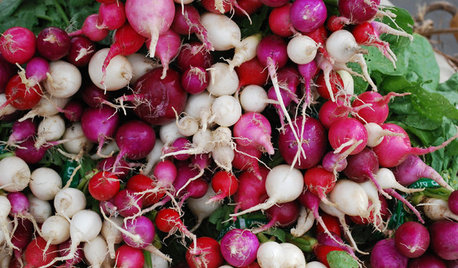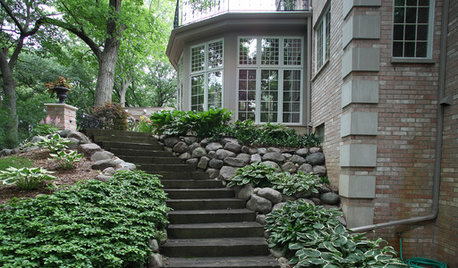Ok...please be gentle. I'm a complete noob when it comes to gardening. I have read a lot of information, several books, etc. I'm more of a hands-on learner. I learn by just doing, trial and error...but the vegetable garden got the best of me. I am so ready to give up but I do NOT want to give up. I want to be successful. As much as I hate the terminology, I do not have a green thumb. Aside from my husband and my dog, the only thing I've been able to keep alive is the aloe vera plant that sits in my kitchen window. And it's tiny. Pretty sure I should have re-potted it long ago. My husband, on the other hand, does an amazing job at keeping plants alive and bringing them back to life when they look very dead...but he has admitted that he's far too lazy to mess with a vegetable garden, so the responsibility lies with me. And I'm ok with that.
So, last year we decided together that we would plant a small vegetable garden. I think we got a little gung-ho for the two of us because we went crazy. My stepdad who claims to know everything (now I know he doesn't know as much as he claims) wanted to help out. Since we live in a rental we didn't till into the ground. My husband and my stepdad built some boxes, we lined with landscaping cloth and filled with dirt from behind the shed. It was beautiful dirt. Looked like crumbled chocolate cake (which is what I've read it should look like) and was full of earth worms. We did the PH test tube test on it and it was right where it should have been. So, off to the garden store to spend $200 on plants that were already started. I said we went overboard and I meant it. We also procrastinated lol. We planted them mid-April. We planted some stuff in the boxes and I had bought 5-gallon grow bags for the tomato and pepper plants.
Fast forward a bit. I watered every morning as I hung clothes on the line. I had read an inch and a half-two inches of water per week (more during dry spells) OR if the dirt feels dry when you stick a fingertip in to give it a little water. So that's basically what I did. I was afraid of over-watering because I had read about root-rot. My tomato plants SHOT up. I mean they grew like CRAZY. And they were green and beautiful but I had no tomatoes. So I read more. Read that I might need to self-pollinate them. I hadn't noticed any bugs around. No bees or ladybugs or ANY bugs (except ticks and whatever annoying creatures ate my lettuce all to shreds). So, I started giving the tomato plants gentle shakes and what do you know...I started to see some little fruit growing! The lettuce was gone. The broccoli never grew anything at all after being re-planted. We got a handful of jalapenos, a few bell peppers and a few tomatoes. Definitely not a good harvest for spending $200+ and a lot of time! But I felt like such a failure. Also, my onions and green onions never grew. Even still the onions have a tall plant on top and nothing on bottom. A year later. Ha.
My stepdad (the know it all who really didn't know much) called me out to his house to see how his garden was coming along and he had watered it so much that it literally looked like a standing body of water. I am not kidding. I must have visited for 3 hours that day and the water was still standing when I left. He told me I killed my garden by not watering it enough. Most of mine died off. His flourished. He had so many veggies they were running out his ears!
With that said...how on earth do I know how much I should water and when to water?!
Now I want a garden this year. I'm sure I'm too late for spring. I had waited intentionally because we're relocating to Stillwater at the end of May/early June so that my husband can finish his structural engineering degree. We have purchased a mobile home in a park there and I have permission to plant a small garden. I was hoping to keep most of it in containers and to keep it small. This time I bought seeds to start my own plants. And that's where I'm stuck.
My husband hardly eats any veggies. I happen to love most vegetables. But I want to keep it simple.
Tomatoes-only to use for sauce making/soups as we very rarely eat raw tomatoes
Broccoli-we both love it and have it often
Lettuce-only I'd be eating it for salads daily or every other day...bought mini-butterhead seeds
Bell peppers-Just to use in cooking
Carrots-Just for stews, soups and such
Spinach-I eat it raw and would add it into a ton of things that I cook if I had a good supply of it (preferably a baby-type spinach)
Green beans
And some basic spices: rosemary, basil, thyme, parsley
Not sure if onions and potatoes are really worthwhile to plant in a small garden. They're so cheap at the store and no more than we'd need for two I'm thinking I'd rather just avoid planting them anyway. But I'm open to opinions.
So...my primary questions are...
What types of containers?
Where/what kind of soil do I get to fill the containers with?
When should I start my seeds in order to plant as soon as possible after we move and maybe get an early fall harvest?
I'd like to also plant in the spring...should we be able to store enough veggies from the fall to last until the spring? (Besides lettuce, etc...although I had read something about hot beds but that's probably a little advanced for me)
I'm sorry the story is so long! If you took the time to read it and especially the time to respond, I truly am appreciative.

















kriskoehOriginal Author
Macmex
Related Professionals
Rancho Palos Verdes Landscape Architects & Landscape Designers · Washington Landscape Architects & Landscape Designers · Billerica Landscape Contractors · Beachwood Landscape Contractors · Danvers Landscape Contractors · Gainesville Landscape Contractors · Mashpee Landscape Contractors · Paramount Landscape Contractors · Ronkonkoma Landscape Contractors · San Pedro Landscape Contractors · Maplewood Landscape Contractors · Shenandoah Landscape Contractors · American Fork Decks, Patios & Outdoor Enclosures · Fredericksburg Decks, Patios & Outdoor Enclosures · South Milwaukee Decks, Patios & Outdoor EnclosureskriskoehOriginal Author
Lisa_H OK
Lisa_H OK
MiaOKC
MiaOKC
mulberryknob
Lisa_H OK
kriskoehOriginal Author
mulberryknob
kriskoehOriginal Author
MiaOKC
Okiedawn OK Zone 7
bettycbowen
Okiedawn OK Zone 7
kriskoehOriginal Author
Okiedawn OK Zone 7
redbirdroad
kriskoehOriginal Author
MiaOKC
MiaOKC
soonergrandmom
kriskoehOriginal Author
Okiedawn OK Zone 7
Macmex
kriskoehOriginal Author
MiaOKC